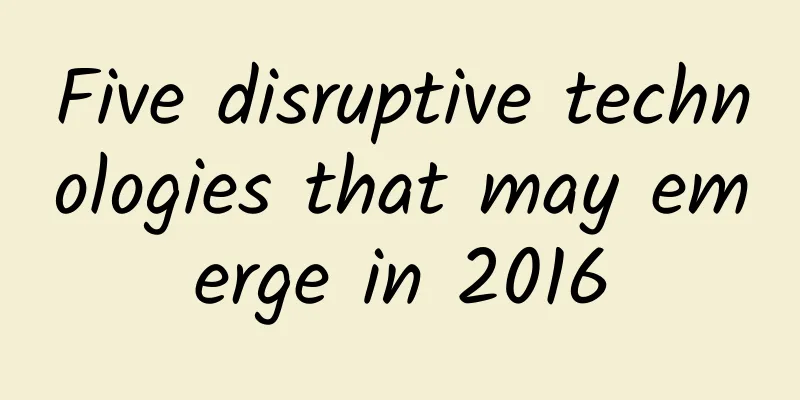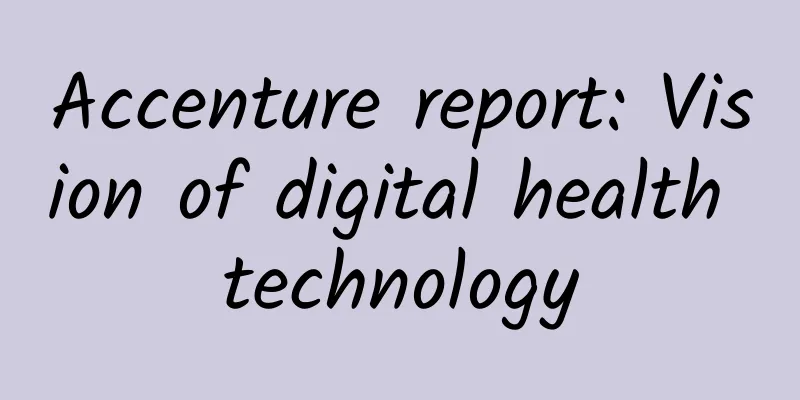Five disruptive technologies that may emerge in 2016

|
Companies are probably done with their lists of hot technologies to watch for in 2016, but beyond that, they need to make some long-term plans to cope with the changes that are taking shape and coming quickly. What will be on the radar screen of enterprises as we enter the new year? Computerworld's 2016 prediction survey, which surveyed 182 IT professionals, identified five potential disruptive technologies or trends: DevOps, virtualization 2.0, emission reduction technology, digital marketing, and IT's emphasis on customer experience. Here’s what the forecast survey revealed about these areas. 1. DevOps As IT tools are updated to enable them to respond more quickly to changing business needs, approaches such as DevOps are gaining firm roots as a new means of agile IT service delivery. We should not only think of DevOps as a complete and mature development methodology, but also consider the significance of the cultural transformation it represents. DevOps emphasizes that the operation and development teams should use some automation tools to achieve a higher level of collaboration and linkage in the early stages of development. Enterprise IT departments, which are under constant pressure to deliver systems quickly, are also rapidly accepting the development ideas of DevOps. In Computerworld's annual forecast survey, 44% of respondents said they planned to adopt DevOps this year, an increase of 7 percentage points from the previous year (37%). Gartner also believes that DevOps adoption will increase as organizations look for ways to shorten development cycles, increase business value, and save money. "Agility is a driver," said Ronni Colville, an analyst at Gartner. "In the past, if IT rolled out a new feature and it didn't work properly, you had to start over. But with DevOps, the development of new applications is a process of rapid trial and error. If there are mistakes, you make adjustments, but you don't start over completely." One sign that DevOps is maturing is the expansion of automation in the areas of testing and monitoring. In other words, a successful DevOps strategy is less about technology and more about people. “People and culture are the real challenges we face because people have to collaborate with each other in a way that they haven’t done before,” Colville said. 2. Virtualization 2.0 Because virtualization can both reduce costs and effectively improve desktop performance, IT departments are now eager to embrace the next generation of virtualization technology, namely virtualization 2.0. The new technology is no longer limited to desktop computing, but can also provide the same benefits to other systems. Technology professionals who participated in the annual forecast survey said they expect to spend more money on virtualization projects in the next 12 months. 35% of respondents said they are increasing their spending on virtualization, and 64% said they are testing or trialing some type of virtualization technology - including desktop, server, storage, mobile or network virtualization. As an alternative to full virtualization, some organizations are beginning to "containerize" their servers, data centers and cloud applications. "The reason for adopting containers is the flexibility and speed," Colville said. 3. Emission reduction technologies Companies are now very concerned about their carbon footprint in the surrounding environment, which has prompted them to increase investment in various energy-saving technologies. In this year's forecast survey, 16% of respondents said that energy-saving or emission-reduction technologies would become their new investment areas in 2016. Many companies invest in virtualization, new cooling technologies, and energy efficiency management in their data centers in order to reduce energy consumption. Nova Southeastern University has now moved into the world-class data center newly built by operator Verizon in Miami, USA. According to Tom West, the school's CIO, energy conservation and emission reduction are the primary considerations for their decision to move the data center off campus. "All of our servers are now virtual machines, so they only produce a very small carbon footprint, which also makes our energy efficiency very high," he said. 4. Digital Marketing In the digital business era, IT technology has become a key asset to help companies attract customers and find potential customers. As a result, IT and marketing departments are forming collaborations and partnerships that seemed impossible before. Marketing technology - from marketing automation to management and analysis of email promotions - is an important new area of interest for respondents to this forecast survey. 23% of respondents said they plan to increase their investment in marketing technology in 2016; 13% said it will become a new spending item for them. As companies pay more and more attention to cultivating and attracting old customers and potential customers through various digital channels, it is natural to require CIOs and CMOs to work together to promote innovative use cases and ensure the successful implementation and improvement of overall marketing effectiveness. At SAS Institute, collaboration between marketing and IT plays a vital role, which enables role technology to run through the entire customer life cycle. Keith Collins, executive vice president and CIO of the software vendor, said, "Digital transformation is affecting all aspects of business, including how to reach customers, how to find customers, and how to attract customers. All of this is impossible to execute without an effective technology plan, and it is from this partnership that more and more positive energy is generated." 5. Focus on customer experience Customer experience becomes a priority for IT departments as businesses seek to deploy systems that simplify and enhance their relationships with target audiences. In Computerworld's prediction survey this year, focusing on customer experience has naturally become a priority. Last year, when asked to list the single most important IT project, 11% of respondents chose "improving customer experience/satisfaction." This year, the same choice has risen to fourth place, with 16% of respondents choosing it. At mortgage company PrimeLending, IT technology is helping the company reduce friction with customers, seamlessly improve the customer experience, and make the entire loan process simpler and easier for potential customers. Tim Elkins, executive vice president and CIO of the financial services company, said his team has made a lot of improvements to PrimeLendind's IT system, and now customers can apply for mortgages online, and the entire process is quite interactive. They have also developed many mobile applications, all in order to simplify the cumbersome process of filling out paper application forms. For example, one of the applications uses a secure method to automatically collect various bank statements and other financial information required by customers when filling out online forms. "Instead of having to enter numbers or run around collecting forms," Elkins explains. "Now they sit in an open room, state the amount they want to borrow, and then enter five to 10 items on our loan app. The app then runs itself, does a credit check, and the loan is approved before the client signs their name and leaves the door. That's our goal." |
>>: Apps with data - data expressions on mobile phones
Recommend
Google releases second Android 13 developer preview to improve notification push permission settings
In recent months, the development of Android 13 h...
Why is this little bird wearing a “black mask”?
A bird's eye view of science Quanzhou Associa...
Toutiao information flow advertising analysis and delivery skills!
Your familiarity with channels means whether you ...
iTunes is shutting down, and the era of "buying albums" is over
All signs indicate that Apple is preparing to shu...
Scene language - the cornerstone of VR's long-term development
According to foreign media reports, Manick Bhan, ...
Song Boxan, a traditional Chinese medicine practitioner from Linglan, wrote "Zhang Xichun's 52 Effective Prescriptions and the Secret Method of Seeking Truth"
: : : : : : : : : : : : : : : : : : : : : : : : : ...
The latest Douyin live streaming sales skills!
How to set the live broadcast title and cover? Ho...
Cook plans to retire? He told the media that he will try his best to train a successor
[[207470]] NetEase Technology News, October 25, a...
How to make users willing to pay? Xunlei's 7 effective strategies to convince 5 million people to pay
There are two things about the Internet that I fi...
How to promote Xiaohongshu
With the continuous development of the Internet, ...
Samsung thrives on memory chips, how can Chinese manufacturers break through?
Since the second half of last year, the prices of...
Zhang Peichao, the leader of the Young Turks: A psychotherapy course specifically for Chinese people (20 micro-courses) Audio course
Zhang Peichao, the leader of the Young Turks: A p...
C919 opens a new route again. How can a tiny aviation tire carry a plane weighing hundreds of tons?
□ Don't respect the principle of becoming a g...
Hidden crisis, who is the most terrifying invasive species on earth?
Some time ago, the topic #Devil's flowers fou...
Google recruitment information leaked: Android Studio can be used to develop Android systems
Google recently released a new job posting on its...









